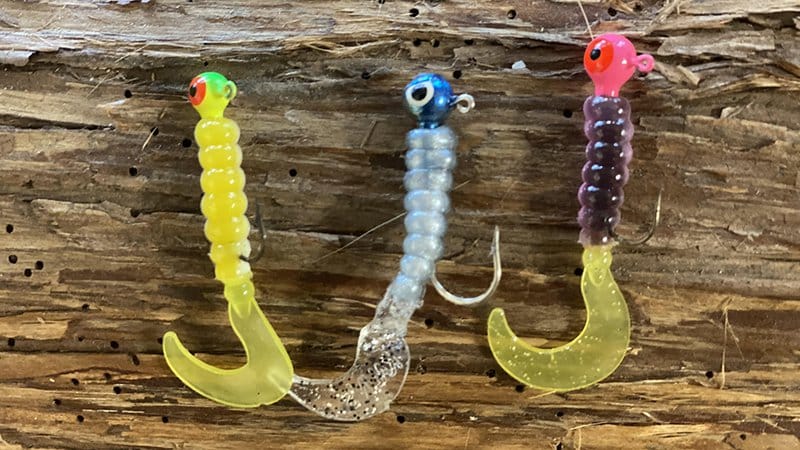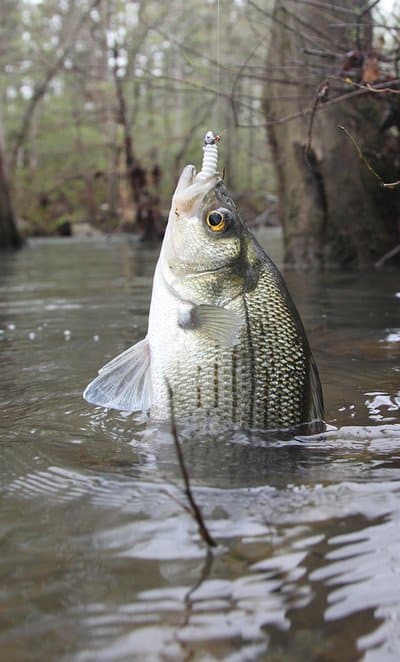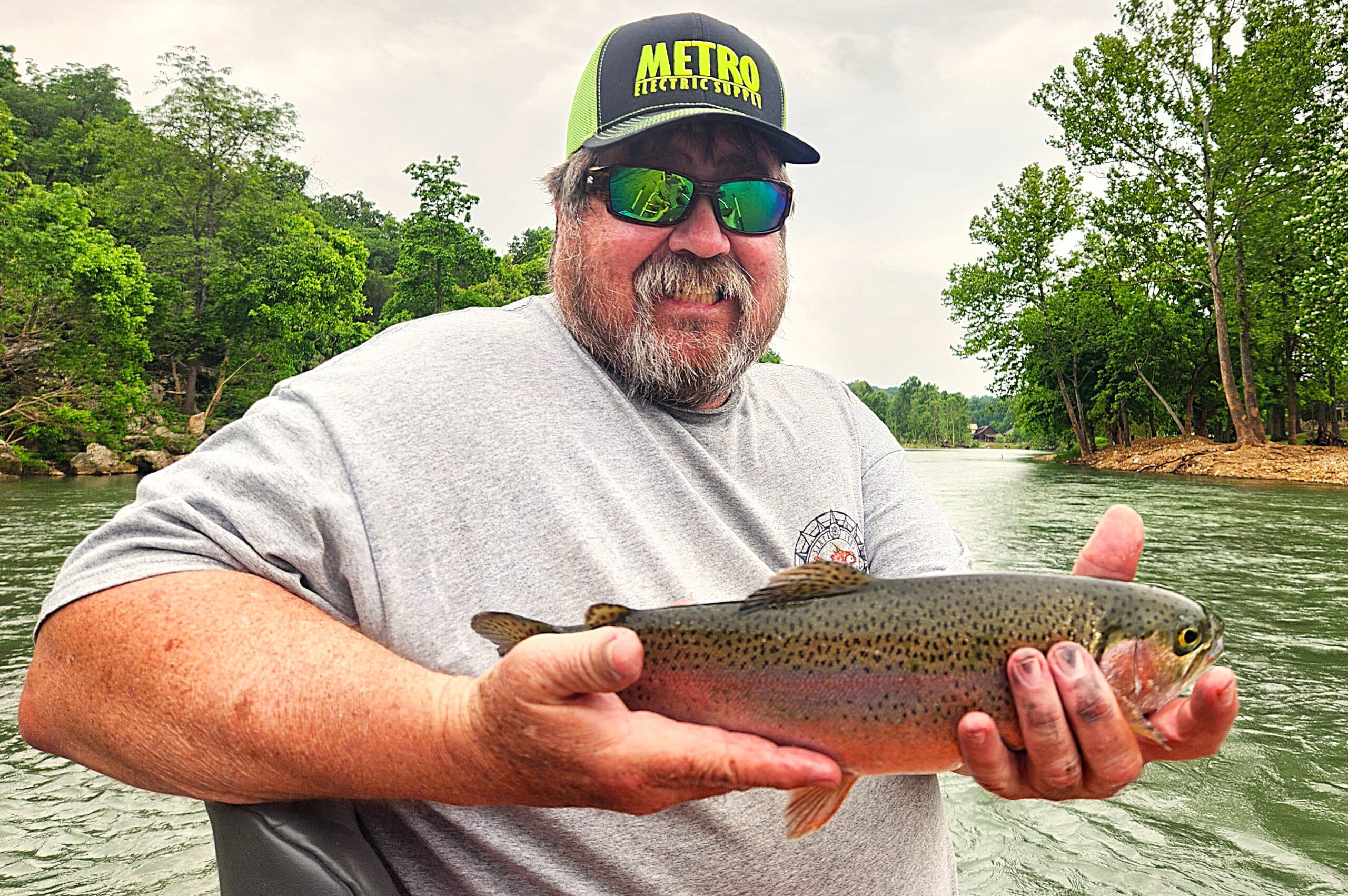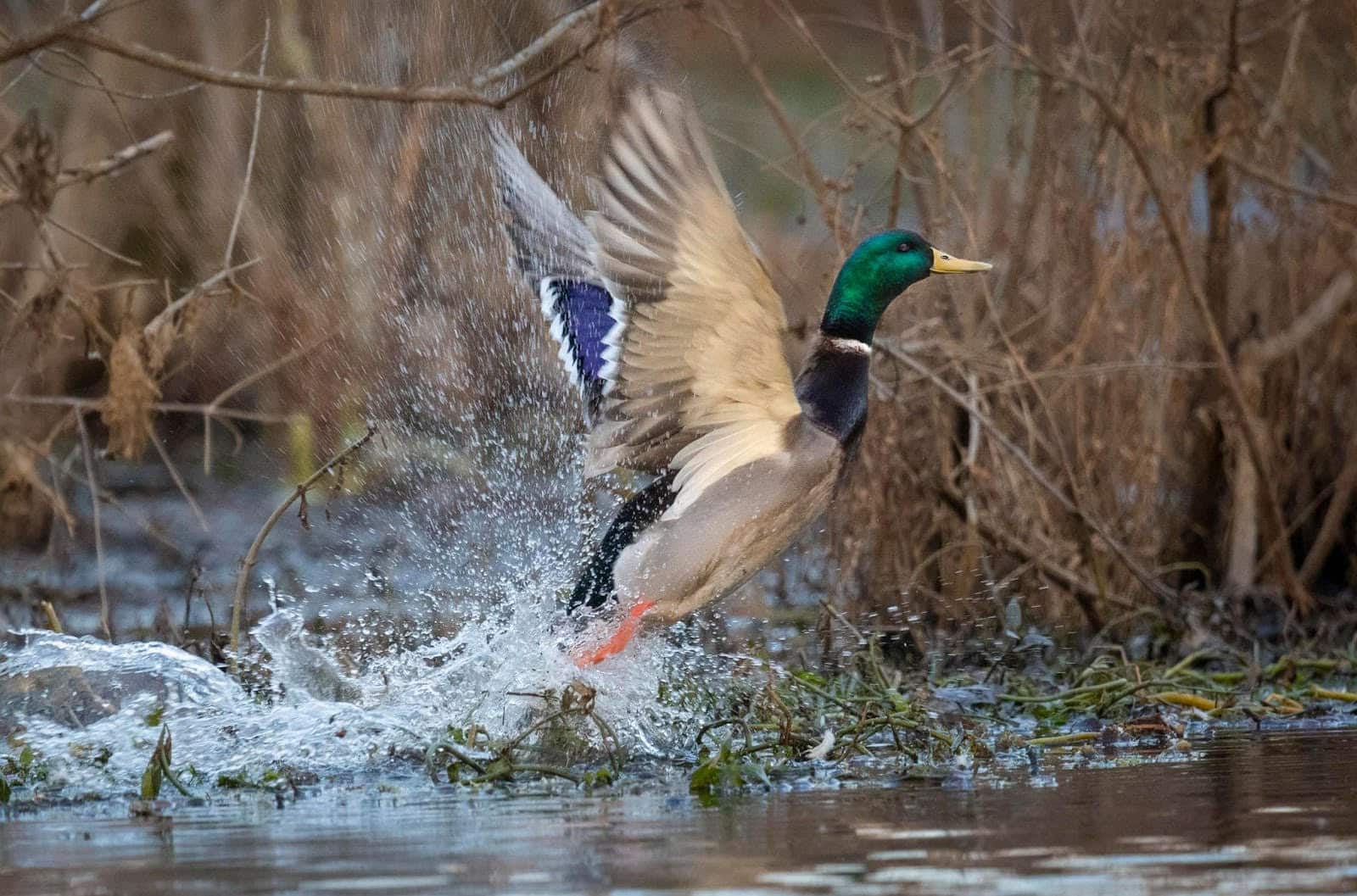Put a twist in your fishing routine
ON 02-10-2021

Feb. 10, 2021
Randy Zellers
Assistant Chief of Communications
LITTLE ROCK — The twister tail or curly-tailed grub is one of the most basic, but effective lures in the multi-species angler’s tacklebox.
By and large, the twister tail has become the bread-and-butter for crappie anglers, but the lure has much more potential than papermouths. Twister tails are available in sizes ranging from less than an inch long for bream and other small panfish to 5 or more inches to entice striped bass, largemouth bass and other big fish in search of big meals.
Made from soft-plastic, these swimming grub bodies can be found in pretty much any color imaginable, but most anglers stick to a handful of tried and true favorites. Tennessee shad (clear/green), lemon meringue (pearl white/chartreuse), and black/chartreuse typically hold the top spots in most angler’s boxes, but every lake has a particular “hot” color. For instance, anglers on Lake Conway would feel naked without a sampling of twister tails in electric chicken (pink/chartreuse), and Lake Nimrod crappie hounds often tout purple/chartreuse as the color combination to beat.

Rigging a twister tail is as easy as fishing gets. Hold the grub next to a jighead that’s appropriate for the size of the lure to see where the bend of the hook begins. Insert the hook in the center of the grub’s front and thread it through until you reach where the hook should come out. Push the hook through the plastic, lining up it up with the seams left on the lure from its manufacturing process. This will ensure the lure runs true and doesn’t swim to one side or the other. To maximize the action of the tail and prevent line twist, hook the lure so that the bend of the hook and the bend of the curly tail go in opposite directions.
The weight of the jighead you use depends upon the depth and conditions you’ll be facing. Most anglers use the least amount of weight they can while still being able to feel the lure as it glides along. The lighter the jighead, the slower the bait will need to be worked to maintain contact. For 2- to 3-inch twister tails, select weights ranging from 1/32-oz. for shallow water and calm days to ¼-oz. for water over 20 feet deep or windy fishing conditions. For most fishing situations for crappie and walleye, a 1/16- or ⅛-oz. jighead paired to a 2-inch twister tail is hard to beat. For bass and walleye, the same weight jighead impaled into a 3-inch twister tail will get the job done.
There’s no wrong way to fish a twister tail, but a few methods prove more successful than others. A simple cast-and-retrieve approach is favored by most anglers, with the angler varying the speed to match the depth and weight of the lure. Crank the handle of your reel just fast enough to keep the lure suspended above the bottom as it swims back to you. Count down from when the lure hits the surface until you see slack form in the line, indicating the lure touched the bottom, then pop it up and begin your retrieve. On the next cast, count to just before the lure hits bottom again and begin cranking slowly and steadily. An occasional pop of the rod tip may trigger a strike from a following fish.
The lift-and-drop technique can also entice a bite, especially from more lethargic fish. Cast the lure and wait until it touches the bottom. Then pull up with the rod, crank the handle a few times to pick up the slack then allow the lure to glide back to the bottom. Most strikes will come as the grub slowly falls. Give a sharp snap of the wrist to set the hook, and enjoy the fight.
The Arkansas Wildlife video crew tagged along with Little Rock angler and radio host Mark Hedrick a few years back, who showed just how effective the twister tail can be. Click here to take a look.
Recent News

Arkansas Wildlife Weekly Fishing Report
Jun. 26, 2025

2025-26 Federal Duck Stamp reveal Friday
Jun. 26, 2025
Subscribe to Our Weekly Newsletter E-mails
Don’t miss another issue. Sign up now to receive the AGFC Wildlife Weekly Newsletter in your mailbox every Wednesday afternoon (Waterfowl Reports are published weekly during waterfowl season and periodically outside the season). Fishing Reports arrive on Thursdays. Fill in the following fields and hit submit. Thanks, and welcome!
